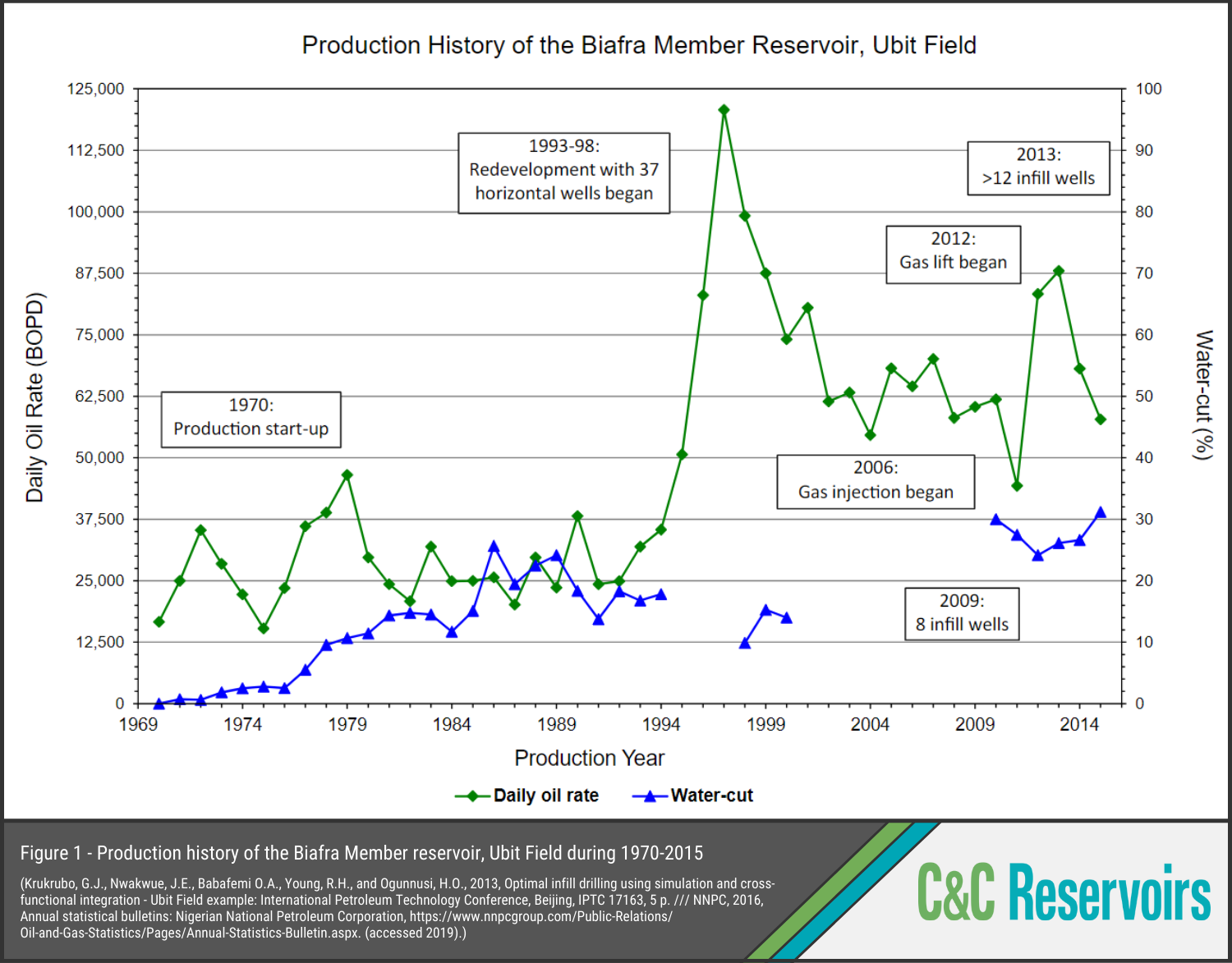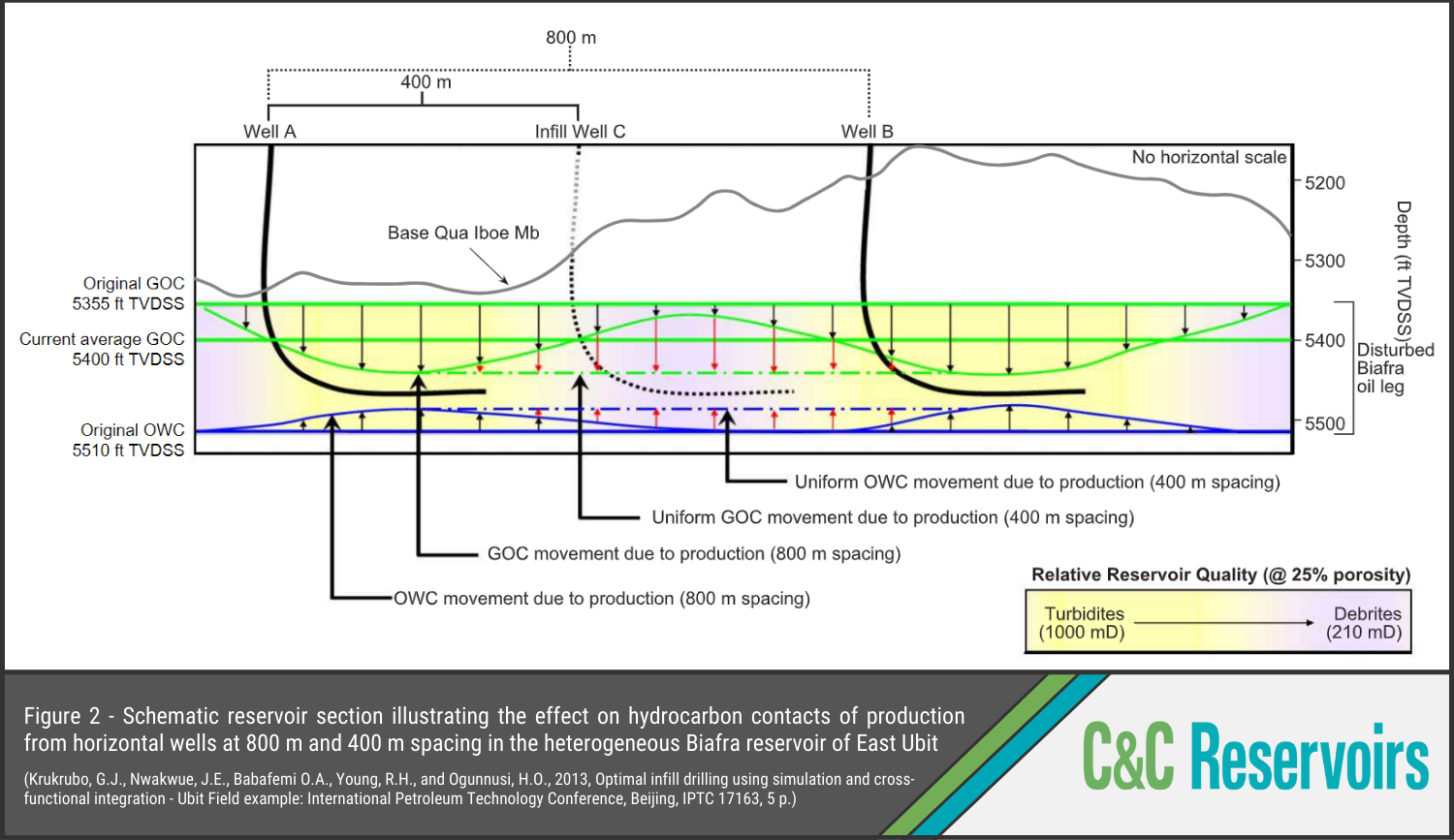The Ubit Field
Analogue Spotlight
Located off the coast of Nigeria in the eastern Niger delta, the Ubit Field boasts a STOIIP of 2400 MMBO. Despite its great potential, combined with good porosity and permeability, production peaked after 9 years at only 46,500 BOPD (Fig. 1). But why?
Early water breakthrough, high GOR, significant water and gas coning, as well as sand production significantly hindered production at first. Re-evaluation of the field was carried out in 1995, utilizing new 3-D seismic integrated with cores, logs and initial horizontal drilling results (Fig. 1).
This re-evaluation revealed the following:
- In East Ubit, which was considered unproductive due to reservoir conditions, operators discovered 70 significant internal faults. These were found to be non-sealing leading to enhanced vertical permeability contributing to coning.
- Production from horizontal wells was found to be 2-4 times that of conventional wells with lower GORs and without water production.
- Detailed evaluation of reservoir architecture using 3-D seismic allowed horizontal wells to be planned with uniform standoffs from the GOC and OWC (Fig. 2). These were designed with a slight upward tilt (2-8°) enabling a sequence of plugs to be set in increasingly lower positions in the casing as the GOC moved down.
By 1997, 37 horizontal wells had been drilled with production peaking at 120,750 BOPD that year. In 2006, gas reinjection was initiated to maintain pressure in the gas cap, and in 2012 gas lift was introduced and infill drilling was undertaken. This led to another peak in production at 88,000BOPD (Fig. 2), demonstrating the importance of utilizing new data to reveal hidden potential.


